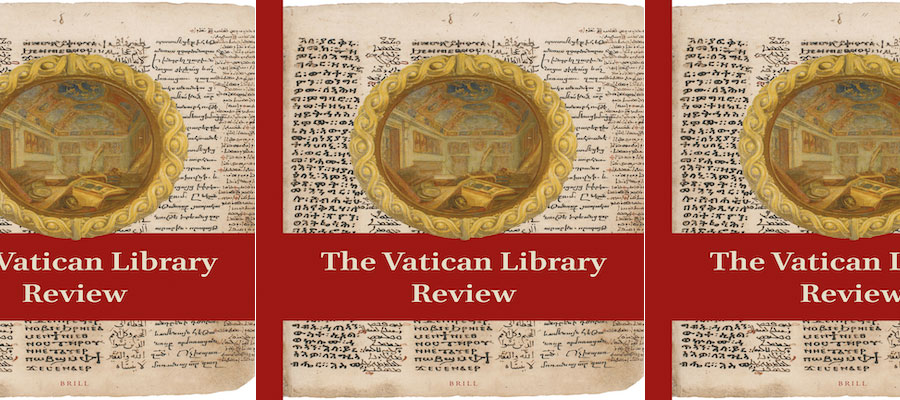The Vatican Library Review, volume 1, issue 2 (December 2022).
CONTENTS INCLUDE
Reconstruction et édition de deux cahiers retrouvés du ms. Sinaï, géo. 49
Bernard Outtier
This article reconstructs two lost quires from Mount Sinai (Egypt), St. Catherine Monastery, Georgian 49, a hymnographical collection from the tenth century. These leaves, each having two layers of erased undertexts, are now preserved in part in BAV, Vat. iber. 4 (10 folios), in Paris, Bibliothèque nationale de France, Ms. géorg. 30 (4 folios), and in Collegeville (MN), Hill Museum & Manuscript Library, Special Collections, Ms. Frag. 32 (2 folios). The Georgian text of the hymns for the 10th of June, St. Onouphrios, the 11th, St Barnabas, the 17th, St Amos and the 19th, Habaquq, is edited and translated into French.
Membra disjecta sinaitica III: Two (Palimpsest) Fragments of Sin. geo. 49 and Their Four Syriac Undertexts
Grigory Kessel
The tenth-century, Georgian manuscript geo. 49 preserved at the monastery of St. Catherine on Sinai is not a regular codex. What distinguishes this manuscript is that the Georgian scribe Iovane Zosime made use of a large number of reused parchment material that originally belonged to other manuscripts copied in a variety of languages. Some of these manuscripts, in turn, were made from the folios of other manuscripts that had been similarly reused before. As it is often the case with Sinai manuscripts, the codex Sin. geo. 49 is not complete and many of its leaves are missing. This article examines four Syriac undertexts in two previously unexplored membra disjecta—Vat. iber. 4 and HMML Ms. Frag. 32—and demonstrates that the recycled manuscript copies are rare and unique witnesses for the texts they originally contained.
The Greek Fragments of the Apophthegmata Patrum in Vat. iber. 4
András Németh
This contribution presents and analyses a new discovery of three passages from the Greek Apophthegmata Patrum (Pambo 7–8, Sisoes 14) as the middle layer of a double palimpsest (Vat. iber. 4). These passages seem to have been brought together for this manuscript (ff. 1 + 5, middle layer) in either Palestine or Egypt in a multilingual environment between the sixth and eighth centuries. The variant readings demonstrate a close affinity with the old Greek alphabetical collection. At the same time, the association of Pambo 8 and Sisoes 14 shows an attempt to group the apophthegms thematically. The script evinces some peculiar palaeographic features worthy of attention.
